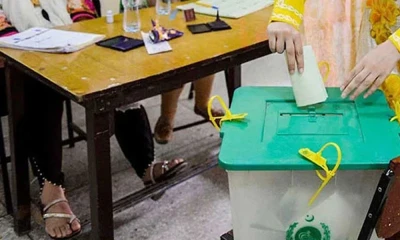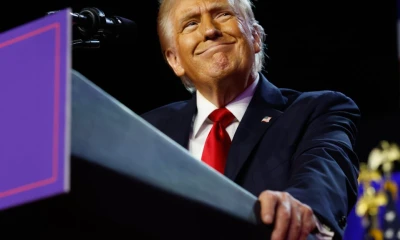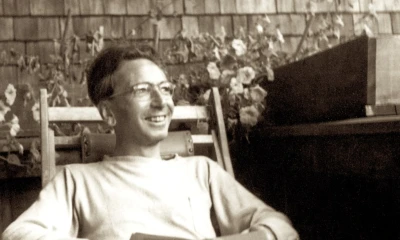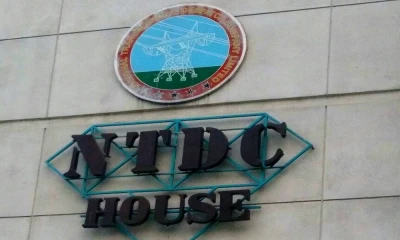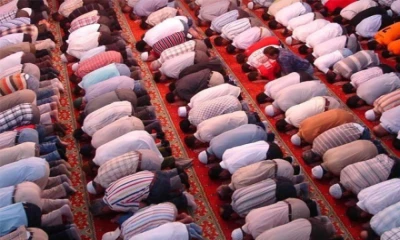Regional
Lahaina schools are open again. Parents worry they’re ridden with toxic waste.
Hawai‘i education officials want to return to normal. But some parents want more time to heal.

On October 15, a day before Lāhainā’s public schools were set to reopen, the families of West Maui — still reeling from the deadliest wildfire in US history — received a grim warning. Hawai‘i public health officials said the ash from the fire in Kula, a mountain town 25 miles east of Lāhainā, contained dangerously high levels of arsenic, 140 times greater than the federal safety limit. The fires burned through all kinds of infrastructure and household materials, which can leak harmful chemicals into the air and water, such as arsenic, lead, and asbestos from older buildings.
The state health department said Lāhainā’s soil, still untested, is likely contaminated with the same toxins as those in Kula.
The news was frightening — but unsurprising — for the people of Lāhainā, a historic oceanside town that was incinerated by deadly fires in August. Tamara Paltin, a county council member who represents Lāhainā, spent the past two months bracing for long-term environmental consequences. She and her neighbors knew that the island had not yet metabolized the devastation of the summer firestorm that claimed at least 97 lives and displaced thousands more.
“You can’t experience something like that and just expect everything to return to normal in a few months,” she said in an interview with Vox.
But Paltin and other West Maui parents were shocked when Keith Hayashi, the superintendent of the Hawai‛i public school system, said students would still be expected to return to class that same week. Lāhainā families first learned about the school reopening plan on October 4, when Hayashi announced that he was working alongside the state Department of Health to send students back to the classroom. Together, the state officials — aided by the Environmental Protection Agency (EPA) — determined that it is now safe to return to Lāhainā’s school campuses, which sit on the edge of the burn zone.
Less than two weeks later, and despite reports of toxic ash in Kula, Hayashi said the government’s safety assessment was unchanged.
Local families were wary of the superintendent’s assurances. As of late October, many families across the district are still keeping their kids out of Lāhainā schools.
Paltin’s two children, ages 11 and 13, were expected to return to Lāhainā Intermediate School on October 17, just days after the Kula report was released. “I’m not sending my keiki back there,” she said, using the Hawaiian word for “child.”
When the Kula report was released on October 15, Superintendent Hayashi held a virtual press conference alongside Dr. Kenneth Fink, Director of the Hawai‛i Department of Health. Hayashi said the reopening of Lāhainā schools “is critical to the well-being of our students and to the Lāhainā community.”
One Lāhainā campus, the King Kamehameha III Elementary was destroyed in the fire, so the Department of Education is using tents to expand classroom space at the nearby Princess Nāhiʻenaʻena Elementary. Despite the superintendent’s bid for normalcy, the school reopening plan has sown fear and confusion among parents. Even before the Kula reports were released, parents I spoke with told me they thought the process seemed dangerously rushed, with children expected to return to school before the EPA finished clearing the hazardous waste created by the fires.
The EPA cleanup, called “Phase 1” in the twofold recovery process, entails removing household materials that become highly dangerous after a major fire, like damaged propane tanks, batteries, and paints. Phase 1, a critical step for protecting residents from hazardous waste, was just 75 percent complete on October 18, the same day Lāhainā’s youngest students were scheduled to return to the classroom.
Many teachers at Princess Nāhiʻenaʻena Elementary asked for blackout curtains for the classrooms that overlook the epicenter of the burn zone. They worried that kids would be retraumatized by the sight of the destruction.
Lāhainā’s ash will be tested after Phase 1 is complete, though the state Department of Health said the results will likely be similar to Kula because “homes in the impacted area of Lāhainā were constructed during the same time period.”
The decision to move forward with the reopening of Lāhainā public schools leaves several concerned parents at an impasse. They can send children back to school, trusting the state’s assessment of potential health risks, or they can scramble to find an alternative method of education. Hundreds of parents opted to keep their children out of Lāhainā classrooms.
For a safe reopening, state education and health officials need to ensure that the likely toxic ash near Lāhainā’s schools does not become airborne. In last week’s virtual press conference, Fink said ash in the air “could indicate a potential risk of exposure to the toxic materials.”
And this is where Lāhainā’s famous Kona winds, which blow in from the southwestern edge of Maui, become a major concern. The winds tend to intensify during the academic year, between October and April. Parents worry that ash from the burn zone, just blocks away from Lāhainā’s schools, will get caught in the Kona winds, contaminating the air that the students are breathing.
:no_upscale()/cdn.vox-cdn.com/uploads/chorus_asset/file/25048490/AP23285785291555.jpg)
Kalikolehua Storer felt unsafe sending her 8-year-old son back to in-person elementary school classes in Lāhainā. “What’s going to happen on a day like today, when the Kona winds are coming in from the ocean, and everything gets caught in that wind?” Storer told me recently.
As a precautionary measure, the EPA plans to cover the roughly 10 square miles of Lāhainā in a nontoxic adhesive called Soiltac, which prevents the soil from moving. Soilworks, the company that manufactures Soiltac, said the material is “completely transparent” after it dries, promising minimal aesthetic changes to Lāhainā’s landscape. The EPA used a different soil stabilizer, also created by Soilworks, to help protect salmon from contaminants produced by the 2020 Oregon wildfires. “EPA used Soiltac in Kula and it demonstrated that this product can be safely applied to burned properties, reducing the potential exposure to ash and debris,” a spokesman for the agency told Vox.
Initial application of Soiltac in Lāhainā was “focused on burned properties near schools and near residences that may be occupied,” the EPA spokesman said. The agency warned that it would likely take a month to apply the Soiltac across town — a process they had only just begun by mid-October, just days before students returned to campus.
In the meantime, to assuage safety concerns, state health officials installed air quality monitors around Lāhainā to detect elevated levels of fine particulate matter, known as PM 2.5 (the 2.5 microns describes its size, 30 times smaller than the width of a human hair). Those tiny particles can embed in the lungs and travel in the bloodstream, aggravating inflammation, asthma, heart disease, and mental health.
By detecting changes in the amount of particulate matter in the air, state officials say, the schools will be alerted if toxins in the ground become airborne.
“There are three monitors at Lāhaināluna High School, one each at Lāhainā Intermediate and Princess Nāhiʻenaʻena Elementary, and two monitors between the schools and impacted areas,” a spokesman for the Hawai‛i Department of Health told Vox in a statement.
Yet some environmental health experts questioned the state’s reliance on PM 2.5 monitors to assess safety.
John Balmes, a professor at UC Berkeley’s School of Public Health, said the monitors used in Lāhainā can detect changes in the concentration of particulate matter, “but it’s not going to tell you what’s in the particulate matter. Any contamination with metals such as arsenic, cobalt — you can only make assumptions based on testing that’s been done of that dust or ash.”
Because the ash near Lāhainā schools has not yet been tested, the information provided by PM 2.5 offers limited insight into the health risks facing students and teachers. “If you tested the ash ... and found it to be not too toxic, not with high levels of arsenic, for example, then you could just monitor the particulate levels,” Balmes said. But the air monitors used in Lāhainā schools “don’t tell you anything about the toxicity” of the airborne particles.
When the monitors detect a level of air quality that is dangerous for sensitive groups, teachers are instructed to close all doors and windows and to turn on indoor air filters and cleaners, both of which improve indoor air quality. A spokesman for the Department of Education told Vox that HEPA air filters or portable air cleaners “are available in every classroom and office.” The air cleaners “are not required to be turned on” until the air pollution passes a certain threshold, though the HEPA filters run continually “if desired.”
It is a safety protocol that confused Lisa Patel, a Stanford pediatrician whose research focuses on how climate change impacts health.
“For now, they should just be running those air purifiers continuously, period,” Patel said.
The pediatrician said the PM 2.5 monitors that surround the school can be “a few hours delayed” in detecting changes in the air. “In the meantime, you expose those kids to the pollution,” she said. By the time the monitors are pinging, those particulates may have already lodged in kids’ lungs.
“We have every reason to be concerned because children breathe faster, so they’re taking in more of that pollution pound for pound,” said Patel. “And especially when they’re young, they’re in a period of rapid development, so the toxins in that wildfire smoke are potentially more harmful to them.”
:no_upscale()/cdn.vox-cdn.com/uploads/chorus_asset/file/25048495/AP23285785259690.jpg)
Faced with such uncertainties, a growing faction of Lāhainā parents are unwilling to place trust in the assurances offered by state education and health officials.
“Where will these officials be if our kids get sick five, 10, 15 years down the line? I do not want to be part of a class action lawsuit,” Paltin said. “I do not want to see a television commercial saying something like ‘if your kids went to Lāhainā public schools between 2023 and 2025, call this law office.’ I want my kids to be safe.”
Hundreds of wealthier families in Lāhainā transferred their children to nearby private and charter schools.
A spokesperson for the Department of Education said parents could send their children to public schools outside of West Maui, some of which are over 20 miles away, but they won’t provide school buses to take them there; the parents would “need to make alternate transportation arrangements” to those faraway campuses.
Even the ability to supervise a child during remote learning is a privilege that most Lāhainā families do not have. Earlier this month, Hawai‘i’s governor Josh Green lifted travel restrictions, welcoming tourists back to West Maui despite objections from many local residents, who worried that outsiders would strain the island’s already limited housing supply. The decision heightened tensions between West Maui residents and the Hawai‛i government, exacerbating the existing housing crisis and creating a more urgent need for working parents to find child care.
“And it’s human nature to just want to get back to the way things were,” Paltin said.
Storer, whose house is nestled on the edge of the Lāhainā burn zone, has been living with her son at a hotel three miles north of the town’s only remaining public elementary schools. She is among the hundreds of local parents who enrolled their children in the state’s remote learning program.
“If he has to do distance learning while I work, then that’s just how it’s got to be now,” she said.
Storer knows that parents who do not have the option to work from home—especially those who work in tourism—feel pressured to acquiesce to the Department of Education’s new bid for normalcy. As the push to slow the reopening of Lāhainā schools continues, she worries that Lāhainā will feel a rift between the families who sent children back to school and those who didn’t.
“These conversations are not meant to divide our community,” Storer said. “But because of the situation, and because of the unknown, we wanted to prepare well. Our children have been forced to react to an emergency one too many times.”
-
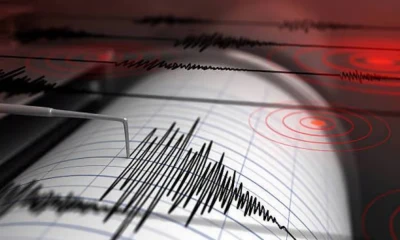
 Pakistan 1 day ago
Pakistan 1 day agoMagnitude 5.3 earthquake in Islamabad, adjoining areas
-

 Pakistan 2 days ago
Pakistan 2 days agoCOAS Munir and Australia army chief vow to strengthen defense cooperation
-
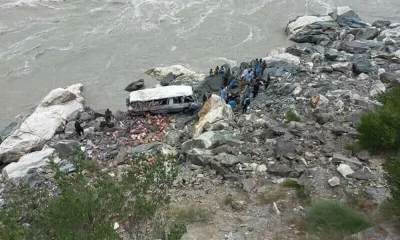
 Regional 2 days ago
Regional 2 days agoWedding bus capsizes in river, two dead, 22 missing
-

 Pakistan 1 day ago
Pakistan 1 day agoSmog issue is old, can’t be solved overnight: CM Punjab
-
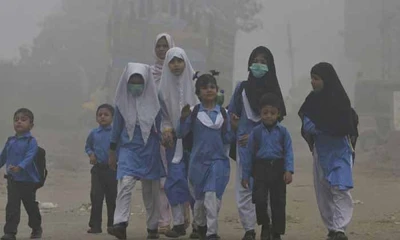
 Pakistan 2 days ago
Pakistan 2 days agoSmog: Orders to close all schools across Punjab
-

 Technology 2 days ago
Technology 2 days agoNew feature for Gmail users
-
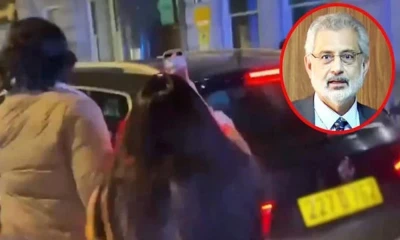
 Pakistan 1 day ago
Pakistan 1 day agoAttack on Qazi: British police visit Pakistan High Commission
-

 Entertainment 1 day ago
Entertainment 1 day agoFamous Korean actor commits suicide


